Wishlists and Product Comparisons are my favorite functionalities in online stores.
I don't want to exaggerate, but around 40% of my shopping would fail without them.
Why? Because I wouldn't be able to decide. I wouldn't remember which laptop had a better processor, which one had a better graphics card, or which one had a better price.
God bless the comparison feature!
Fortunately, Product Comparison, just like price comparison, has become a standard feature, and thanks to them, online shopping is much easier.
Although the design of this function is not as easy. Why? You'll find out soon enough.
We invite you to read on!
Comparisons in E-Commerce and purchasing decisions
You can buy almost everything on the Internet or maybe even everything if we include the dark web. You can buy everything in many variants.
Online shopping is always/sometimes (cross out where inapplicable) a tiring task.
You need to search, choose, compare, evaluate, think through, analyze, try to understand your needs, and estimate the risk.
You can get a headache just thinking about the complexity of this process.
For a while, comparing products was the most challenging task in online stores (probably for many customers).
The unavailability of this function prompted many customers (including myself) to open product pages in separate browser tabs.
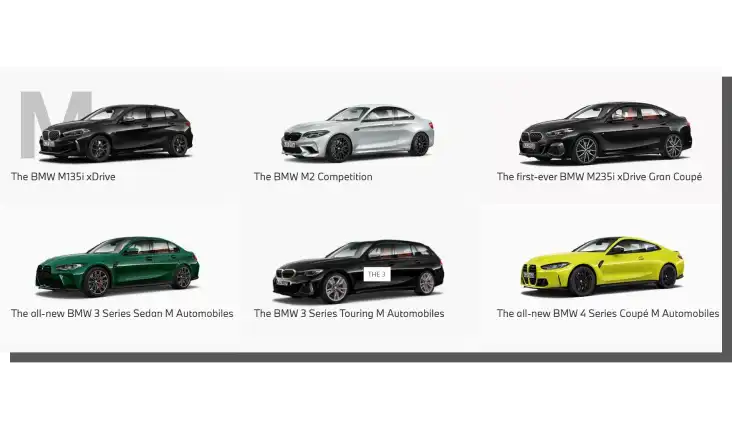
With more or less success, customers tried to remember which attribute of which product was better.
Comparing two products is a natural human need. It's a fixed element of shopping. It gains significance along with the complexity of the product itself, its nature, and its capability of customization.
It's almost indispensable because of the growing number of similar products belonging to the same category and price range.
Unfortunately, the spread of the Compare/Add to the Comparison function didn't resolve all problems, although it did make the comparison of two products a much more pleasant experience.
So, where is the issue?
Not all products on the Internet can be compared. And to be more precise, not all products are worth comparing.
It's not about the Internet itself but about the nature and attributes of products.
Can you compare two laptops? Of course. Can you compare two shirts? You can, but you won't gain much from such a comparison.
So nobody should be surprised that the availability of the Compare feature in stores selling clothes is close to zero. In turn, the availability of the Compare feature in stores with laptops reaches almost 100%.
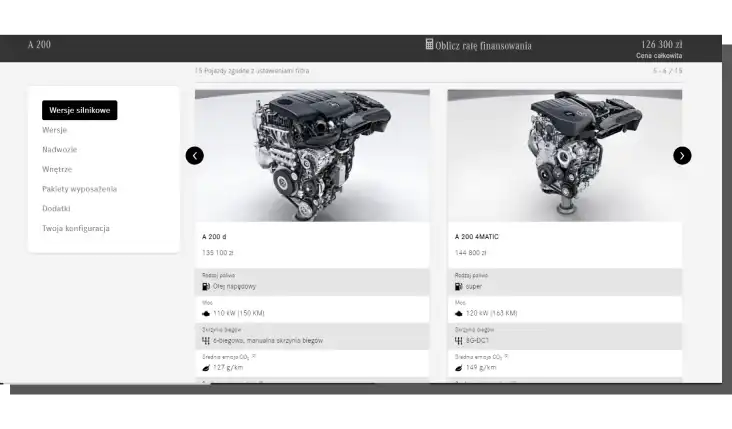
Where does this difference come from? We can look at goods from a few perspectives. In this article, we'll deal with two divisions that are useful for designing the Product Comparison feature in an online store.
Comparing Shopping Goods in E-Commerce
Let's start with a definition. What are Shopping Goods? Shopping Goods demand customers analyze, compare, and learn.
In other words, they require commitment, work, effort, and a fair amount of self-reliance from buyers. For example, expressed through the need to reach credible sources of information.
These sources are usually technical specifications, expert reviews, opinions of other customers, discussions, overviews, and comparisons in the trade press.

Shopping goods can also be divided into homogeneous and heterogeneous. The first ones are seen as identical, and the second as different.
However, it's not about their objective differences/similarities but their subjective perception and categorization by customers of online stores.
Shopping Goods (e.g., electronic equipment, cars) are hard to sell without providing customers with information on their attributes.
It should be presented clearly and with a language of benefits, not technical jargon.
Since experts can only understand and evaluate their quality, attributes, functional features, used technologies, and way of working, finding equivalents for them is essential.
And that's how an online store should help, by offering comparison tables, educational materials, and communication channels where customers can ask for advice.
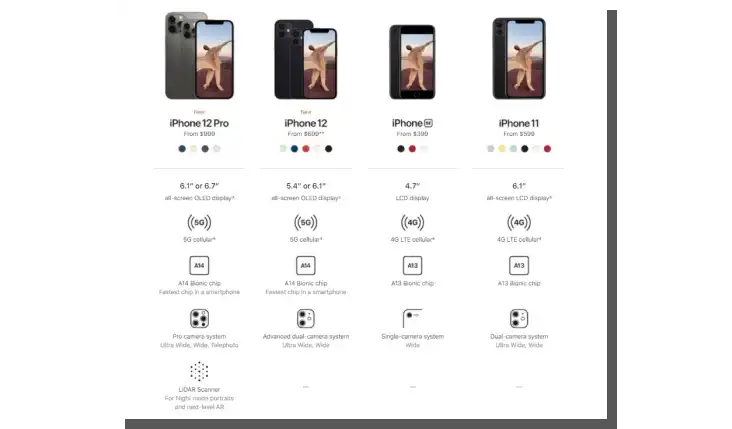
While creating a Product Comparison feature, it's worth remembering yet another distinction. It allows you to look at a product not from the side of conditions regarding choice but also from the side of the presentation.
Comparing Experience Goods in E-Commerce
According to the SEC Classification of Goods and Services, consumer goods can be divided into the following:
- Search Goods
- Experience Goods
- Credence Claims/Post-Experience Goods.
In the case of Search Goods, their quality, utility, and adequacy to needs can be evaluated without the need to try them out, try them on, or test them.
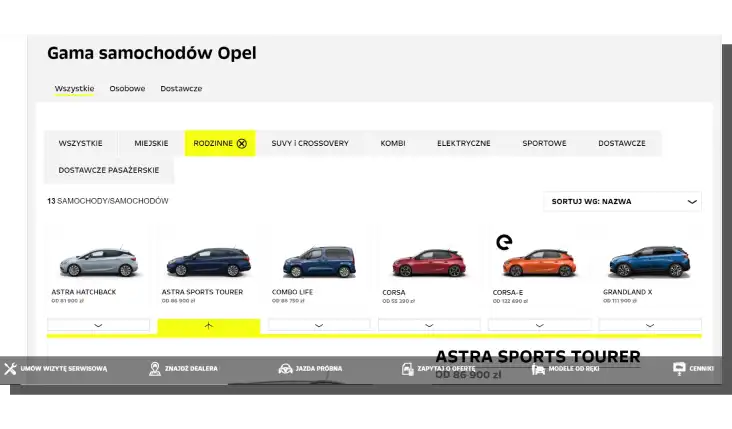
Their attributes can be assessed remotely based on the following:
- Experience
- Knowledge gained through participation in the market as a buyer
- Knowledge provided by the seller which credibility, reliability, and concreteness the customer can evaluate by themselves
- Objective comparison measures (regarding the class, certificates, and performance tests).
Experience Goods can't be evaluated and chosen with such ease and certainty. Their utility, quality, and value can only be assessed after direct contact and use.
Whereas products from an online store (although more often, these are services) belonging to the third category limit, to a large extent, the ability to evaluate their quality and utility even after experiencing them.
In the case of Experience Goods, the helpfulness of specifications, product comparisons, and comparison tables is much smaller than in the case of Search Goods.
The evaluation of quality in the case of Experience Goods almost 100% depends on the individual, very subjective expectations and preferences of a buyer. Search Goods can be assessed with objective measures.
For example, while comparing processors, customers refer to parameters of numerical results which personal preferences don't impact at all.

It's also worth remembering one more remark, which you can find in the article "Branding: Search, Experience, and Credence." Creating a brand for Experience Goods depends mainly on reputation and word of mouth.
People who have already used (experienced) the product may provide helpful testimonials to those who are thinking about purchasing it. The strength of their influence will be proportional to their credibility.
It's easier to sell Experience Goods to brands with a long market history and a well-established position.
Since now you understand the difference between products, you need to analyze how this conditions the purchasing method in E-Commerce.
Two types of purchases in E-Commerce
In the article "3 High-Impact Tips for Designing an Ecommerce Site That Converts," Levin Mejia distinguishes two types of purchases in E-Commerce. The first one is Considered Purchases, and the second Non-Considered Purchases.
The first one requires the use of comparing. The customer must collect information, opinions, and assessments before deciding. The second type is similar to impulse purchases. They're motivated by a current mood, a spontaneously occurring need.
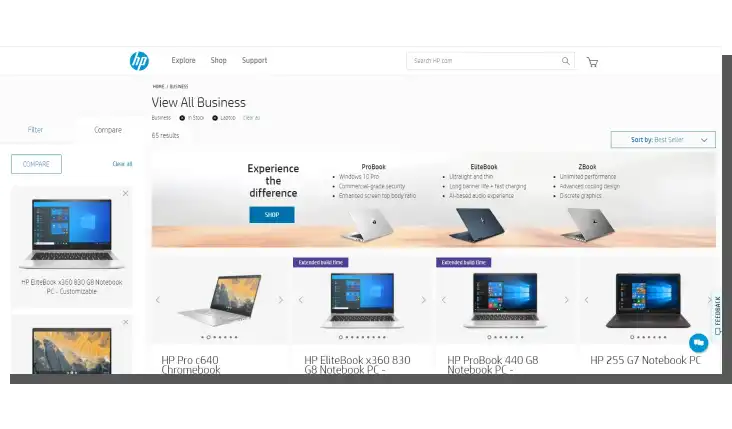
To a large extent, these attitudes toward shopping are conditioned not only by the product's price, regularity, and necessity but also by its complexity.
However, what is most interesting about this article concerns not the divisions but the practical conclusions from them. Customers will use various tools to assess products.
Considered Goods will be viewed, analyzed, and bought more often through omnichannel (with a desktop computer, tablet, or smartphone).
Non-Considered Goods will often be bought through a mobile phone.
What's even more interesting is that the time needed to decide in both cases will be different. Just like the number of interactions with a product page before making a purchase.
Product pages of Considered Goods are, on average, viewed twice as often. In other words, customers feel a greater need, a necessity to analyze, scan, read, and compare them.
UX in E-Commerce — functions of the Product Comparison feature
A typical reason for using the Product Comparison feature in online stores is the desire to:
- Find a better, more attractive offer (e.g., price, attribute)
- Speed up the purchase
- Minimize the risk
- Increase the sense of safety
- Ascertain your own preferences.
But also the need to:
- Avoid making a mistake
- Make an informed decision
- Take control of the selection and purchasing process
- Discard potentially false impressions, perceptions, and convictions.
The Product Comparison feature (just like a price comparison function) in an online store often offers access to:
- Ratings
- Opinions
- Recommendations
- Reviews
- Comparisons.
It's a valuable and desirable source of knowledge and a way to persuade the customer based on social proof.
However, for a tool like the Product Comparison in an online store to work, it's necessary to:
- Distinguish and highlight "essential" from "merely useful" information in the comparison process
- Create a list of crucial attributes
- Offer the same set of information and data for all compared products
- Give data a clear, logical structure and define a hierarchy of importance
- Offer data in an accessible and understandable way
- Ensure visual readability of data (data presented in tables should be designed with scannability in mind).
The completeness of this data is crucial. The Product Comparison tool should continuously update it.
Products in an online store should be compared through the knowledge that is:
- Complete
- Reliable
- Specific
- Significant
- Credible
- Objective
- Independent of the interests of an online store.
A customer who can't compare products based on such a set of information has a lower willingness to buy.
When crucial information is missing, from their point of view, they feel discouraged.
What are the methods of comparing products in E-Commerce?
As a rule, you can compare products in two ways, by focusing on their differences or highlighting their similarities.
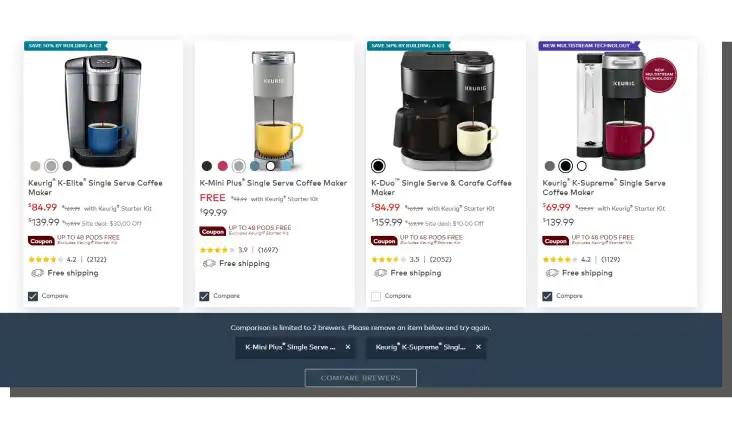
The second option seems illogical and counter-effective. In a moment, we'll consider the point of using it. In the meantime, let's focus on differences.
The aim of a comparison is to indicate a difference. The easier, faster, and trouble-free the customer will discover it, the easier they will decide.
So, why do customers need a feature to highlight similarities? For a simple reason. To not feel like they lost something. It's also useful when the customer wants to make sure that products are similar to each other.
However, one more issue is the number of differences and similarities.
Their scale is a significant suggestion that provides a context for the attributes that are the selection criteria.
If you have two almost identical products, which differ in price, and if the price is a determining criterion for you, it will become even more important thanks to such a context.
The scale of differences and similarities also determines the ease of access to this information.
Searching for one attribute that is different in both products is like looking for a needle in a haystack. In turn, counting and checking common features is as tiring as counting sheep before sleep.
It's easy to make a mistake here. The Product Comparison feature should relieve customers of this work.
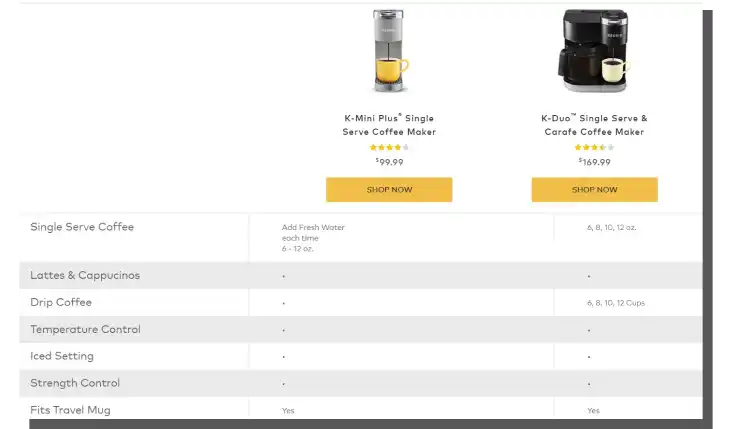
The presentation of compared products should additionally include the following:
- Fitting the comparison table on one screen or minimizing the need to scroll
- Capability of simple interaction with a comparison table
- Marking identical, similar data with the same color
- At least two elements to compare and not more than five.
Also:
- Information about the maximum amount of products that can be compared
- Readability of buttons of the Compare function
- Compliance with the convention of creating comparison tables — columns are used to present individual products, rows to present their attributes
- Option to choose between a static table (whose content is fixed) and a dynamic one (whose content results from the choices of the customer)
- Size of the screen and the available space on a given device.
As well as:
- Constant visibility of headings, names, and product labels when scrolling through the table
- Offering photos in comparison tables
- Ability to remove products from the comparison
- Option to add products to the shopping cart
- Ease of adding products to the comparison
- And last but not least — the integrity and reliability of the comparison.
Finally, it's also worth remembering the remark made by researchers from the Nielsen Norman Group, who noted:
The biggest problem with comparing products in online stores is not the Product Comparison feature but its content.
Inconsistent data in comparison tables is always a source of confusion and frustration. The Product Comparison feature should allow users to quickly see the differences and similarities between products.
Product Comparison. Summary
- God bless the comparison feature! The Product Comparison feature is a very practical invention.
- Shopping online, in many cases, involves searching, choosing, comparing, and estimating risks.
- Comparing is a fixed element of shopping.
- It gains significance along with the complexity of the product itself, its nature, and its capability of customization.
- Not all products on the Internet can be compared. And even the best Product Comparison feature won't help here.
- We can look at goods from a few perspectives.
- Shopping Goods demand customers analyze, compare, and learn.
- Shopping Goods are hard to sell without providing customers with information on their attributes.
- Online stores should offer comparison tables, educational materials, and communication channels where customers can get advice.
- In the case of Search Goods, their quality, utility, and adequacy to needs can be evaluated without the need to try them out, try them on, or test them.
- Utility, quality, and value of Experienced Goods can be ascertained only through direct contact and use.
- Customers evaluate Experience Goods through individual and very subjective criteria.
- Search Goods can be assessed with objective measures.
- Considered Goods will be more often bought through omnichannel (with a desktop computer, tablet, or smartphone).
- Non-Considered Goods will more often be bought through a mobile phone.
- The time needed to decide in both situations will be different. Just like the number of interactions with a product page before making a purchase.
- A typical reason for using the Product Comparison feature in an online store is the desire to find a better offer and speed up the purchase.
- The Product Comparison feature should offer a comparison based on complete, reliable, credible, and objective knowledge.
- A customer who can't compare products based on such a set of information has a lower willingness to buy.
- The Product Comparison feature allows customers to compare products according to the criteria of similarities and differences.
- The biggest problem with comparing products in online stores is the content of comparison tables.






